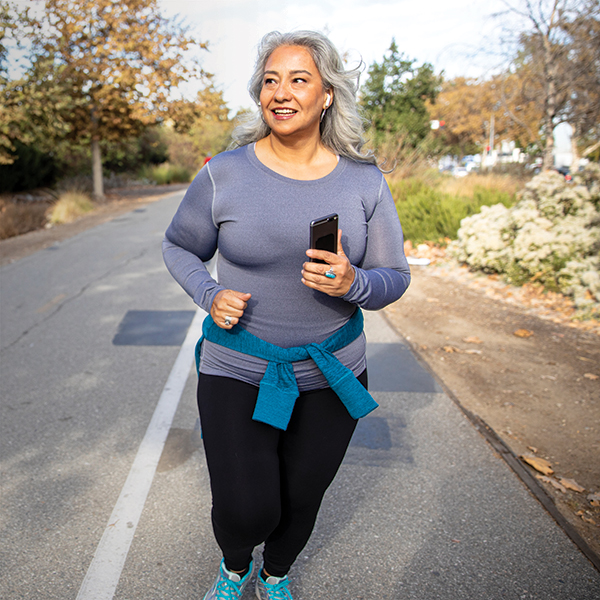
Breast cancer risk factors
Most breast cancers are diagnosed after age 50.
Thanks to efforts from women all over the world, women are more aware than ever of breast cancer and the dangers it poses. So knowing there’s time, how can it be prevented?
There are some things that people know to avoid in order to prevent other cancers. For example, to avoid lung cancer, it’s well known that stopping smoking or not smoking at all is the best prevention. Unfortunately, the main risk factors for breast cancer are two things that cannot be avoided: being born female, and getting older.
Let’s break the risk factors down into two categories: Those you can avoid and those you cannot.
Risk factors you cannot change
If any of these risks apply to you, it does not mean you will get breast cancer, nor does it mean you can’t do anything about it. Regular breast screenings and visits to the doctor are great preventive tools.
Risks include:
- Dense breasts, which have more connective tissue than fatty tissue. Because they are dense, it can be more difficult to detect tumors. Dense breasts can be identified during a mammogram. Your healthcare provider may suggest additional, alternative screenings if you have dense breasts.
- Early menstrual periods, defined as starting your period before age 12.
- Family members diagnosed with breast or ovarian cancer. The risk is higher if she has a mother, sister, or daughter (first-degree relative) who has had breast cancer. This is also the case if there are multiple family members on either her mother’s or father’s side who have had breast cancer. Having a first-degree male relative with breast cancer also raises a woman’s risk.
- Inherited changes (mutations) to certain genes, such as BRCA1 and BRCA2. Having this gene makes you high risk. These inherited genetic changes also increase the risk of ovarian cancer. To know if this is a risk factor for you, tests for the gene are available.
- Late menopause, defined as starting menopause after age 55.
- Previous breast cancer diagnosis. Women who have had breast cancer are more likely to get breast cancer a second time.
- Radiation therapy to the chest or breasts before age 30. An example would be treatment for Hodgkin’s lymphoma.
- Some noncancerous breast diseases increase risk. Examples are atypical hyperplasia or lobular carcinoma in situ.
- Women who took the drug diethylstilbestrol (DES). DES was given to some pregnant women in the United States between 1940 and 1971 to prevent miscarriage.
- Women whose mothers took DES while pregnant with them are also at risk.
Risk factors you can change
It’s never too late to make lifestyle changes if you find something in this list that applies to you. Again, regular breast screenings and visits to your healthcare provider can help.
- A first pregnancy after age 30, not breastfeeding, and never having a full-term pregnancy.
- Alcohol and increased alcohol consumption.
- Being exposed to chemicals that can cause cancer (carcinogens).
- Being overweight or obese after menopause.
- Changes in hormones due to working night shifts.
- Physical inactivity.
- Smoking.
- Some forms of hormone replacement therapy taken during menopause for more than five years. This refers to therapies that include both estrogen and progesterone.
- Taking certain oral contraceptives (birth control pills).
Talk to your doctor about ways to reduce your risk, such as medicines that block or decrease estrogen in your body, or surgery.
What you can do
The United States Preventive Services Task Force (USPSTF) is an organization made up of doctors and disease experts. They study the research covering how best to prevent diseases. They then make recommendations for doctors and other healthcare professionals to help patients avoid diseases, or to find them early. Earlier diagnosis usually means better, more successful outcomes.
The USPSTF recommends that:
- Women who are 50 to 74 years old and are at average risk for breast cancer get a mammogram every two years.
- Women who are 40 to 49 years old should talk to their doctor or other healthcare professional about when to start and how often to get a mammogram.
- Women should weigh the benefits and risks of screening tests when deciding whether to begin getting mammograms before age 50.
Want to learn more? See our article on breast cancer screenings.
Interested in health and wellness information? Visit the Capital Journal for more articles.
This is not medical advice and is not intended to be a substitute for professional medical advice, diagnosis, or treatment. Always seek the advice of your physician or other qualified health care provider with any questions you may have regarding a medical condition or treatment. The information provided is meant for a general audience. Capital Blue Cross and its affiliated companies believe this health education resource provides useful information but does not assume any liability associated with its use.
Sources:
Information from CDC. CDC breast cancer screening article.
The information provided is meant for a general audience. Capital Blue Cross and its affiliated companies believe this health education resource provides useful information but does not assume any liability associated with its use.